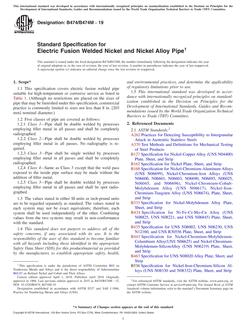1.1 This guide provides field data collection and calculation methodologies for the estimation of light non-aqueous phase liquid (LNAPL) transmissivity in unconsolidated porous sediments. The methodologies presented herein may, or may not be, applicable to other hydrogeologic regimes (for example, karst, fracture flow). LNAPL transmissivity represents the volume of LNAPL (L³) through a unit width (L) of aquifer per unit time (t) per unit drawdown (L) with units of (L²/T). LNAPL transmissivity is a directly proportional metric for LNAPL recoverability whereas other metrics such as apparent LNAPL thickness gauged in wells do not exhibit a consistent relationship to recoverability. The recoverability for a given gauged LNAPL thickness in a well will vary between different soil types, LNAPL types or hydrogeologic conditions. LNAPL transmissivity accounts for those parameters and conditions. LNAPL transmissivity values can be used in the following five ways: (1) Estimate LNAPL recovery rate for multiple technologies; (2) Identify trends in recoverability via mapping; (3) Applied as a leading (startup) indicator for recovery; (4) Applied as a lagging (shutdown) indicator for LNAPL recovery; and (5) Applied as a robust calibration metric for multi-phase models (Hawthorne and Kirkman, 2011 (1)2 and ITRC ((2)). The methodologies for LNAPL transmissivity estimation provided in this document include short-term aquifer testing methods (LNAPL baildown/slug testing and manual LNAPL skimming testing), and long-term methods (that is, LNAPL recovery system performance analysis, and LNAPL tracer testing). The magnitude of transmissivity of any fluid in the subsurface is controlled by the same variables (that is, fluid pore space saturation, soil permeability, fluid density, fluid viscosity, the interval that LNAPL flows over in the formation and the gravitational acceleration constant). A direct mathematical relationship exists between the transmissivity of a fluid and the discharge of that fluid for a given induced drawdown. The methodologies are generally aimed at measuring the relationship of discharge versus drawdown for the occurrence of LNAPL in a well, which can be used to estimate the transmissivity of LNAPL in the formation. The focus, therefore, is to provide standard methodology on how to obtain accurate measurements of these two parameters (that is, discharge and drawdown) for multi-phase occurrences to estimate LNAPL transmissivity.
Product Details
- Published:
- 10/01/2012
- Number of Pages:
- 68
- File Size:
- 1 file , 5.6 MB
- Redline File Size:
- 2 files , 16 MB


